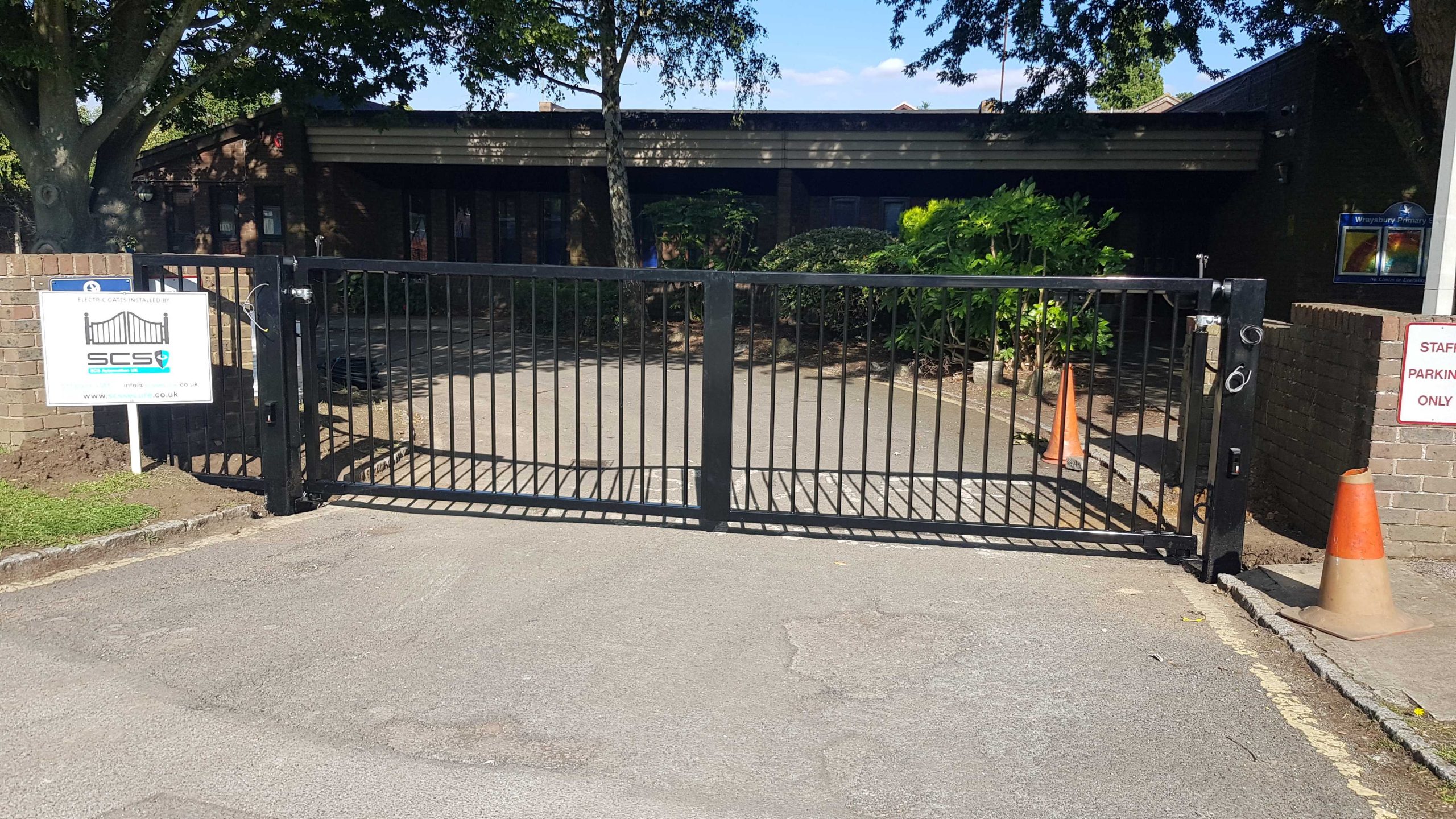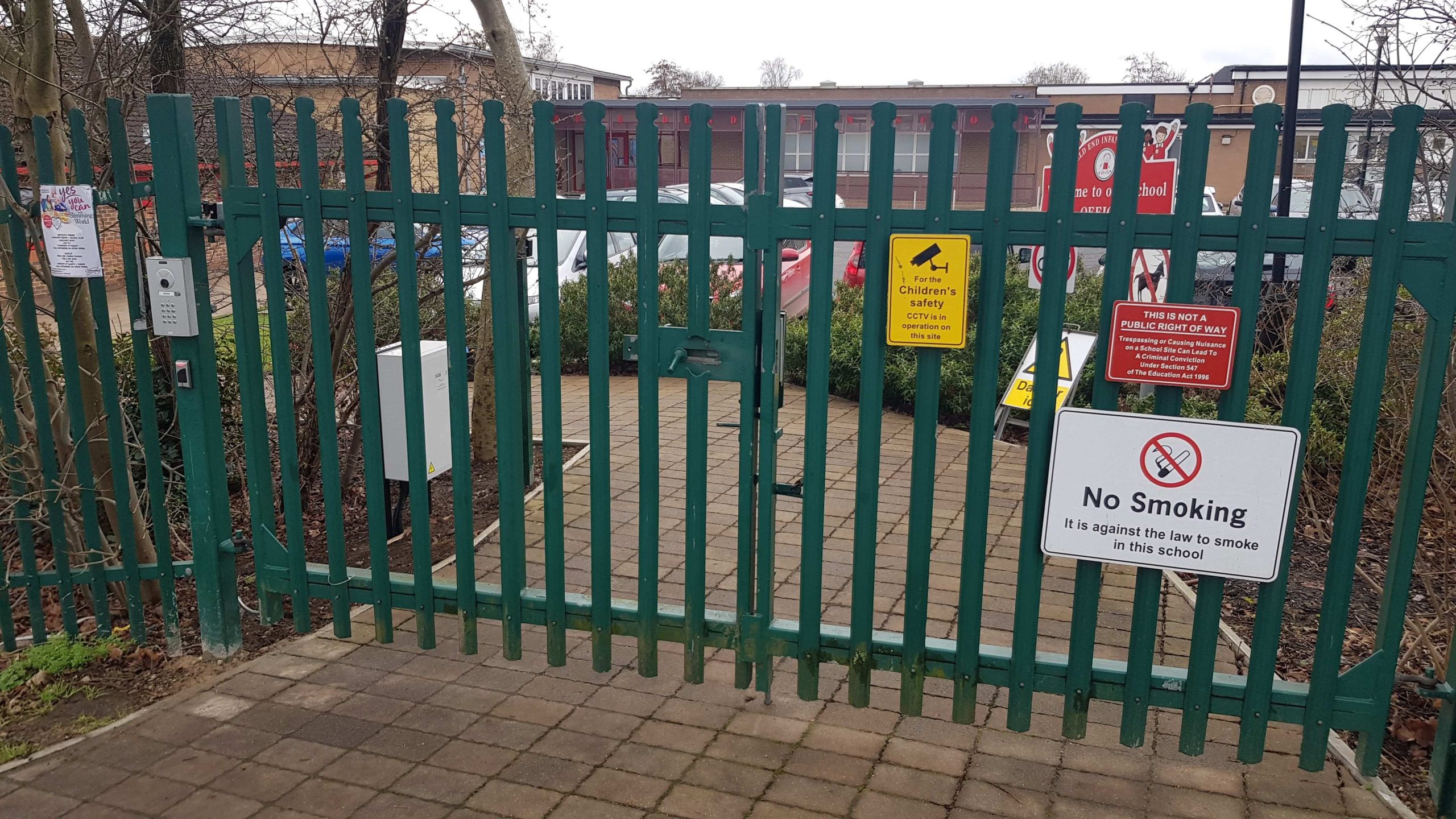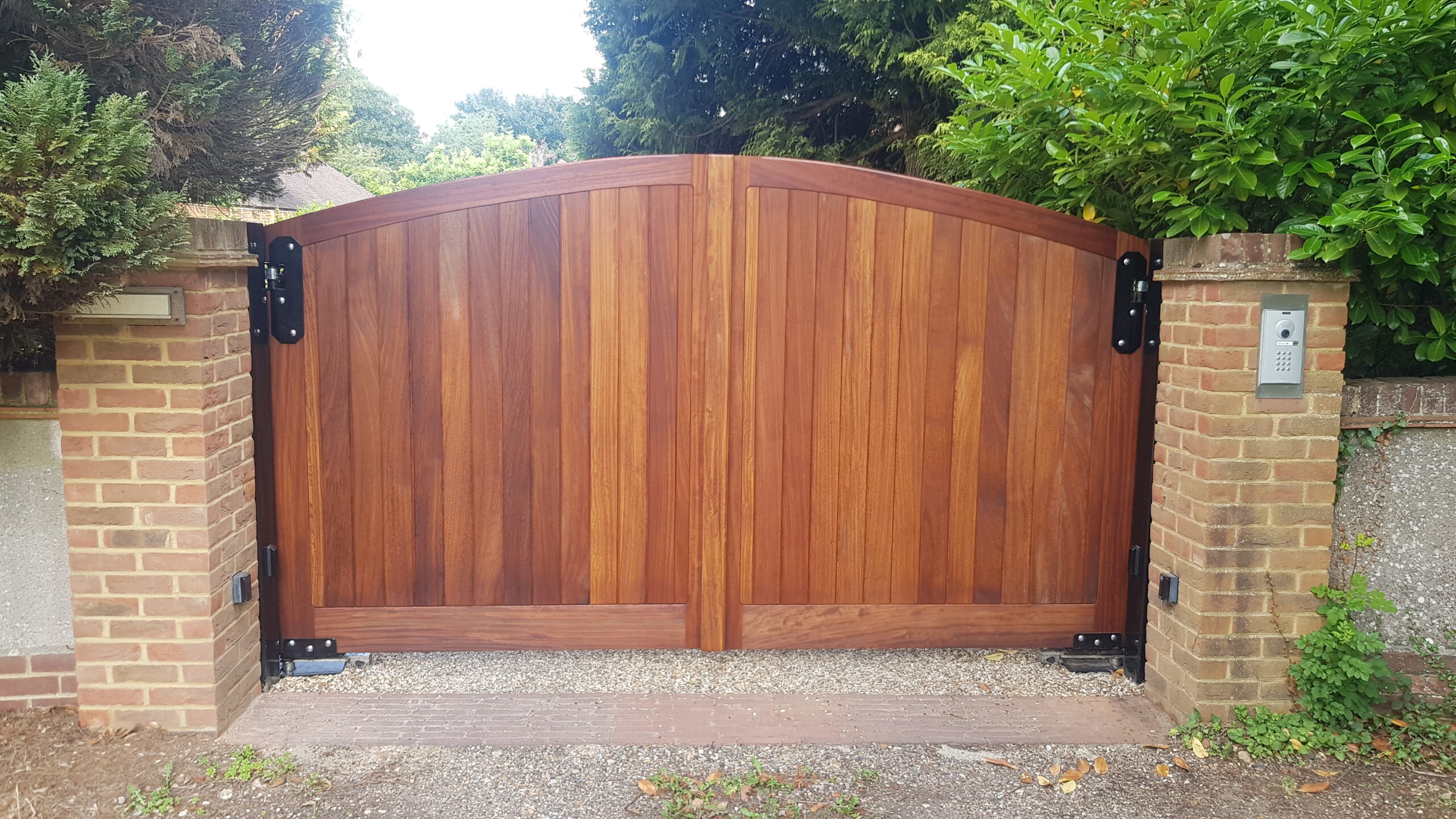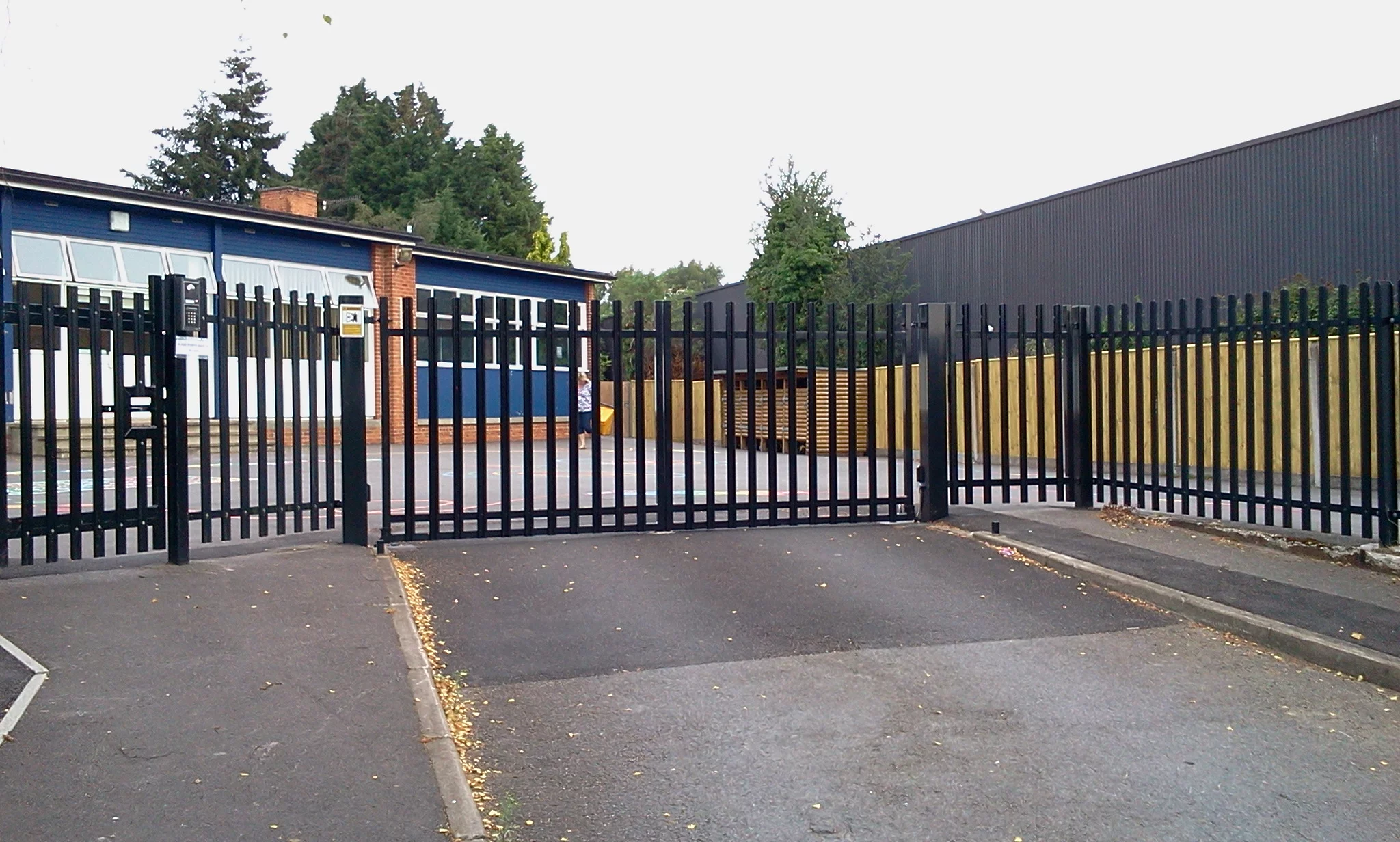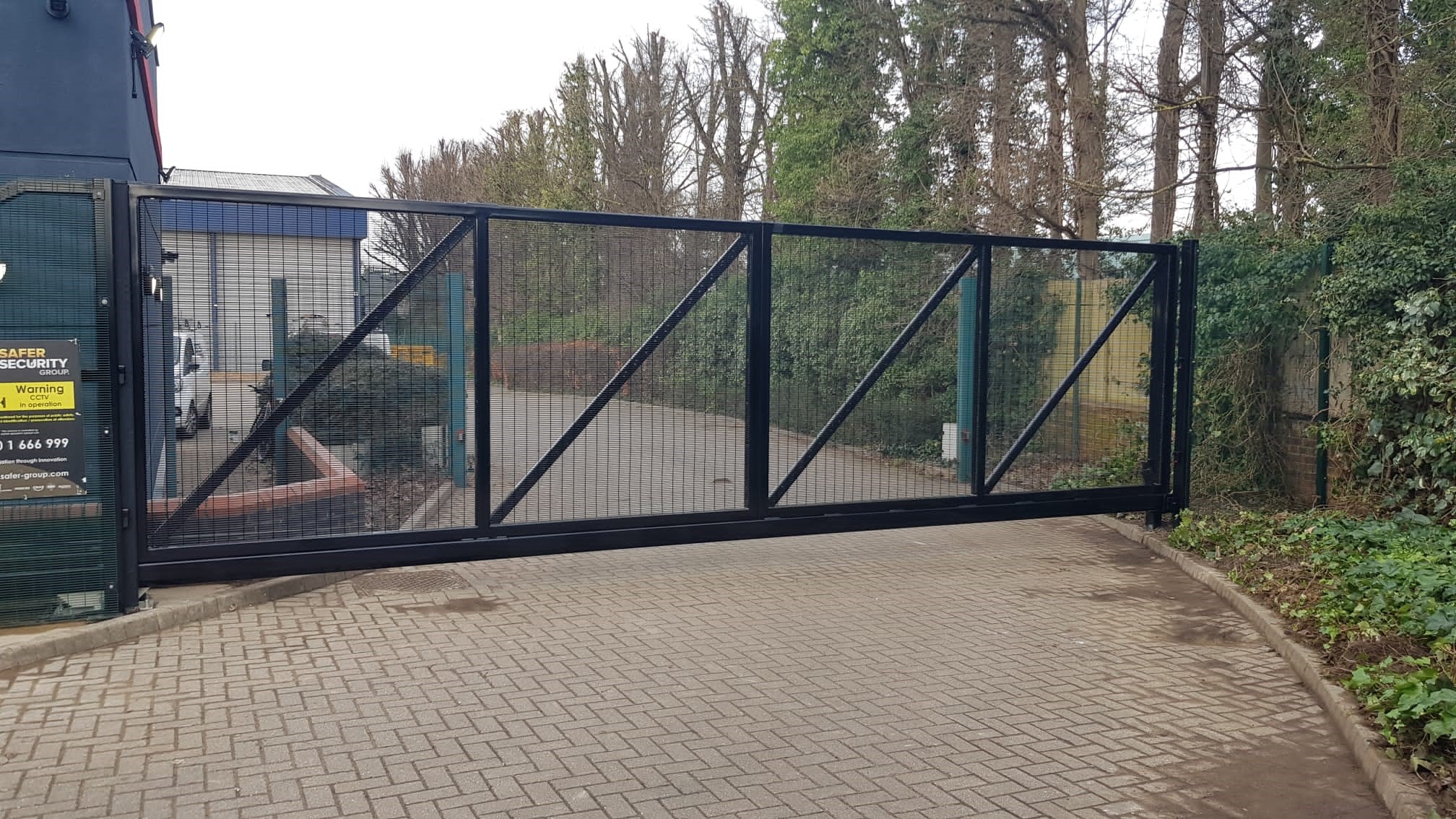When it comes to automated gates, many customers assume once they’re installed, they’re safe and reliable. Unfortunately, poor workmanship and incorrect specifications can leave gates dangerous, non-compliant, or prone to failure. At SCS, we’re often called to inspect and rectify issues left by others. Below, we highlight the most common mistakes and how we ensure they don’t happen on our projects.
Top Security Gate Installation Mistakes
There are many installation mistakes that can occur on any electric gate installation. Enuring that the gate is installed to the highest safety standard is essential. We have therefore outlined some of the most common gate installation mistakes that have seen on a consistent basis.
Incorrect Safety Edge Placement
One of the most common mistakes we see is when safety edges aren’t fitted in the correct place. Many installers fit safety edges in limited or incorrect positions, risking entrapment or injury during gate operation. As safety contact edges are used to guard against possible crushing or shearing points on electric gates and barriers so it is essential that they are fitted in the correct place to ensure maximum protection.
Non-Compliant Gate Automation
Gates must comply with regulations like DHF and EN 12453. Many installers cut corners, failing to fit essential safety devices or test the system properly. In reality, most installers pay lip service to gate safety, quoting it in documentation but failing to follow through in practice. Full compliance involves higher costs, something many customers are not made aware of. Please always check that the gate installation company that you select comply with the regulations and are a member of the DHF.
Undersized Motors for Gate Weight
A heavy steel gate requires appropriately rated motors. Using undersized motors leads to strain, slow operation, and premature failure. This can result in the gates not fuctioning property which can lead to accidents and injury. Please ensure that your gate installer uses the correct rated motor – don’t be afraid to ask and check this!
Incorrect Groundworks for Gate Supports
Without proper foundations, gate posts or support structures can shift, leading to alignment issues or unsafe operation. A lot of companies cut corners here, but it’s the same principle as building a house or commerical property. It will only be as strong as the foundations that it is built on.
Inadequate Safety Signage
This is a key mistake that we see all too frequently. All automated gates require visible warning signage, yet many installs omit this basic legal requirement. Please check your chosen installers work to ensure that the safety signage and emergency procedure information are in place before the install is signed off.
Unsafe Control Panel Access
Exposed or insecure control panels allow unauthorised tampering, creating both a security and safety risk. The panel must be secure and checked regulary to ensure that it is not only in full working order for also that the cables and functionality aren’t presenting a risk to any users. As people don’t tend to always look after the control panel this is an area where we see a lot of problems.
Insufficient Training for End Users
Many installers walk away after installation, leaving customers unaware of safety features, override controls, or maintenance needs. We always provide a full handover of the features of the gate, the saftety mechasims and the best practices of ensuring the longeity of your gate installation. Something that should happen as standard.
Poor Aesthetics and Finishing
Welding splatter, poor painting, messy cabling, and unsealed posts leave gates looking unprofessional and susceptible to rust or damage. A final fix should occur before the installation is handed over as final.
Insufficient or No Soakaways for Underground Motors
If the need is there to install an underground motor box then it is essential that this has effective drainage. Without soakaways, water builds up and causes motor failure, rusting, and electrical fault. It needed then you should always enquire with the gate installation company about the need, and procedure, for the installation of underground motors.
